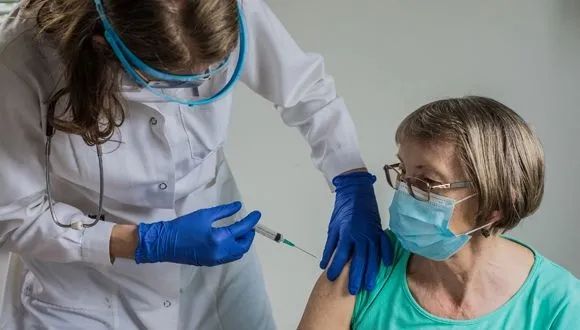Many parents think that they are protecting their children by smoking on the porch or next to the window in a room. However, a new study by Tel Aviv University finds that, in contrast to such beliefs, restricting smoking to the porch does not protect most children from exposure to tobacco smoke. The research team tested for the presence of nicotine in the hair of children whose parents restrict their smoking to the porch or outside the house. Their findings are worrisome: nicotine was found in the hair of six out of ten children.
The researchers emphasize that “in Israel, home porches should be regarded as part of the environment of the home. Smoking next to a window or in another specific place in the home does not protect most children from exposure. Our recommendations are unequivocal: to reduce children’s exposure to tobacco smoke, smoking should be entirely avoided within a range of ten meters from the house. Likewise, in open areas, smokers should maintain a distance of at least ten meters from the children.”
“The Israeli situation is of great concern because in many cases, porches in Israel are directly adjacent to the living areas and may even be partially open some of the time (…) The parents mistakenly believe that the porch offers a ‘safe’ place to smoke.” Prof. Leah (Laura) Rosen
The Porch is No ‘Safe’ Place
The study was led by Prof. Leah (Laura) Rosen from the School of Public Health in Sackler Faculty of Medicine, Tel Aviv University. Also participating in the study: Prof. David Zucker from the Department of Statistics and Data Science, Hebrew University, Jerusalem; Dr. Shannon Gravely from the Department of Psychology, Waterloo University, Canada; Dr. Michal Bitan from the Computer Science Department, the College of Management; Dr. Ana Rule from the Department of Health and Environmental Engineering, Johns Hopkins Bloomberg School of Public Health, Baltimore; and Dr. Vicki Meyers from the Gertner Institute for Epidemiology and Public Policy Research, Sheba Medical Center. The study was published in the International Journal of Environmental Research and Public Health.
In the first stage of the study (published about two years ago), the research team studied hair samples of the children of smoking parents for the presence of nicotine. This provides an estimate of their exposure to tobacco smoke over the past months. It was found that 70% of the children of smoking parents had measurable hair nicotine.
In the current stage of the study, the researchers examined the data by the location of parental smoking. Analysis of the data showed that in families in which the parents restricted their smoking to the porch or outdoors, 62% of the children were still exposed to tobacco smoke.

Prof. Leah (Laura) Rosen
“It is known that smoking outside the house, even when the doors and windows are fully closed, does not completely protect children from exposure to tobacco smoke,” says Prof. Rosen. “The Israeli situation is of great concern because in many cases, porches in Israel are directly adjacent to the living areas and may even be partially open some of the time. The proximity allows smoke to drift from those areas to the interior of the house. The parents mistakenly believe that the porch offers a ‘safe’ place to smoke.”
“In fact, the children are likely to be directly exposed when they come out to the porch and someone is smoking, or when smoke drifts into the house. Once in the home, the smoke is absorbed into the environment, for example, into the furniture or walls or rugs, and is then gradually discharged into the air over weeks or months.”
“Further, this residual smoke, known as third hand smoke, can be absorbed into the body from the environment via swallowing or through the skin, especially among infants and small children. In addition, smoking parents transmit the toxins from the tobacco smoke on their skin, on their hands, in their hair, on their clothing. Therefore, it is recommended to brush teeth, wash hands, and change clothes after smoking, before contact with children.”
“85% of tobacco smoke is invisible, and our sense of smell is not reliable, so many parents mistakenly believe that they are protecting their children, while in fact they are exposing them to substantial health risks.” Prof. Leah (Laura) Rosen
Plea to Israel’s Health Ministry
Prof. Rosen notes that this new information is directly relevant to Case 1416/21 on neighbor smoking, currently being heard in the Supreme Court. The appeal against the Ministries of the Environment, Health, and Interior concerns the tobacco smoke that penetrates apartments as an environmental hazard, a claim that is supported by the definition of an environmental hazard in the Clean Air Law, the Hazard Prevention Law, and the Penal Code.
Prof. Rosen: “The results of this study show that among smoking families, restricting smoking to the porch does not protect most children from exposure to tobacco smoke. Therefore, the Health Ministry’s approach, which opposes protection for individuals from smoke incursion into their own homes to protect the smokers’ children, does not protect the children of smokers, and in addition it can cause substantial harm to neighbors and the children of neighbors. We ask the Health Ministry to reconsider its stand in light of these findings.”
“The State of Israel must make the reduction of parental smoking a national goal and invest the appropriate resources in this issue. Unfortunately, there are many misconceptions regarding when and how the exposure occurs. 85% of tobacco smoke is invisible, and our sense of smell is not reliable, so many parents mistakenly believe that they are protecting their children, while in fact they are exposing them to substantial health risks. As a society, we must safeguard citizens and distance everyone from the risks of tobacco smoke exposure, especially infants and children, pregnant women, and all vulnerable populations,” concludes Prof. Rosen.

















